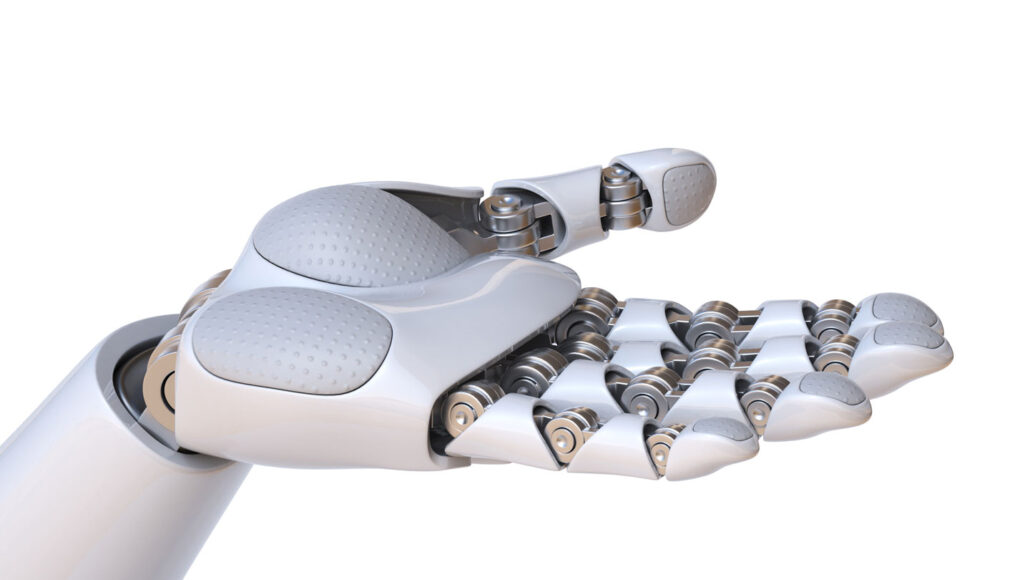Robotics might someday give us an extra hand
It’s a third arm that you would control with the movements of your diaphragm

Roboticists are working to give us a helping hand — literally. Your body would control a bonus limb, just as it does your real arms. And though it’s not ready for prime time, such an assistive device (like the one imagined here) could one day help people with high-precision jobs — such as surgeons — work more efficiently.
koya79/iStock/Getty Images Plus
Share this:
- Share via email (Opens in new window) Email
- Click to share on Facebook (Opens in new window) Facebook
- Click to share on X (Opens in new window) X
- Click to share on Pinterest (Opens in new window) Pinterest
- Click to share on Reddit (Opens in new window) Reddit
- Share to Google Classroom (Opens in new window) Google Classroom
- Click to print (Opens in new window) Print
By Payal Dhar
Have you ever struggled with a task because having two arms just wasn’t enough? If so, you might appreciate a new device that could lend a helping hand — literally. You strap on this robotic arm, then control it with the muscle you use to breathe.
Right now, the robotic arm is worn in the middle of your chest. But it could go above your shoulders or at your side. It all depends on “what you want to do with it,” says engineer Giulia Dominijanni. She was part of a team at the Swiss Federal Institute of Technology in Lausanne, or EPFL, that built the device.
In the past, robotic parts have been designed to replace missing limbs. In those cases, signals could be routed straight from a user’s brain to the device. The nerves and muscles that would have moved their natural arm would then control the robotic one. With the new device, the challenge was to create a bonus limb that someone could control while still using both of their real arms. That’s why Dominijanni’s team designed it to be breath-controlled.
Below the lungs is a muscle called the diaphragm (DY-uh-fram). When it contracts, it pulls air into the lungs. As it relaxes, the lungs expel air. The new robotic limb is attached to an elastic belt around a user’s chest. A sensor on the belt tracks how the diaphragm moves. Electronics in the sensor then talk to the robotic arm.
Inhaling deeply tells the robotic arm to extend. Exhaling deeply directs it to retract. Breathing normally keeps the arm at its current position.

A virtual helping hand
Before building the new arm, the EPFL team first made one in virtual reality, or VR. People using the system would see an avatar with two natural arms, as well as the bonus arm.
Over three days, some 10 to 20 volunteers did several sets of tests with this VR arm. Wearing the breath sensor, they learned to control the virtual third arm. At the same time, sensors in their headsets measured their eye movements. This confirmed people could look around and talk while controlling the bonus arm.
Breath control of the virtual arm seemed to come naturally to people. It took the recruits almost no time to figure it out, Dominijanni says. And when tested on using the VR arm again, even a year later, all could still do it.
The researchers then built a simple robotic limb to work like the virtual one had. A metal band makes up its arm; a flat base serves as its “hand.” New recruits tested it out as did those who had used the VR arm. People who had earlier worked with the virtual arm found it even easier than the new volunteers did to use the true robotic arm.
The EPFL team shared early details of its new system in the December 2023 Science Robotics. The team is now working on making the robotic hand able to grasp things.
Future developments
The early tests showed people could look around and talk while using a bonus arm. But it’s not yet completely clear how well people can control two natural arms plus a robotic one.
“When you’ve lost an arm, there’s very clear parts of your brain, nerves, muscles that are responsible for controlling that arm,” says Jacob George. “When you’re adding something new, it’s unclear how much the brain can do with that.” George directs the University of Utah’s robotics center in Salt Lake City. There, he studies how the human nervous system can be harnessed to control bionic devices.
How well people can control a bonus arm without limiting use of their real limbs is an interesting question, says Soheil Gholami. Answering it will require tapping research in a host of fields, he says — from neuroscience and electronics to human behavior. And what scientists learn could offer insights into how the brain learns new skills. Gholami is a scientist in EPFL’s robotics lab who did not work on the project. But he does work on other types of wearable robotic devices.
Robotic limbs could be useful as prosthetic devices to aid disabled people or those recovering from accidents or strokes. Gholami’s lab is also exploring whether surgeons might use their feet to control extra arms.
Even if controlling three arms proves too difficult for casual use, training a single expert to use an extra limb could be useful for risky or high-precision tasks, Dominijanni adds. For example, it may avoid problems arising from several people having to coordinate during complex surgeries or high-risk rescue attempts.
This is one in a series presenting news on technology and innovation, made possible with generous support from the Lemelson Foundation.







